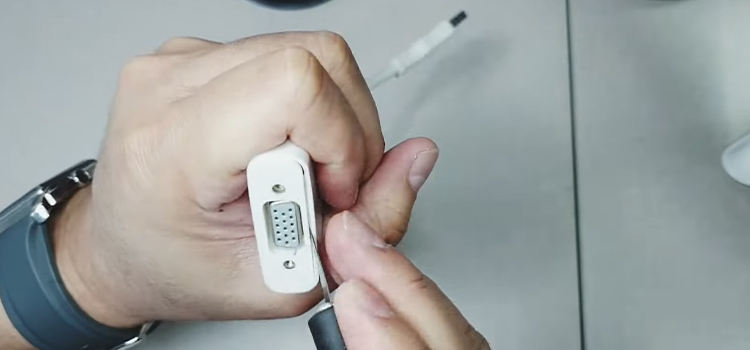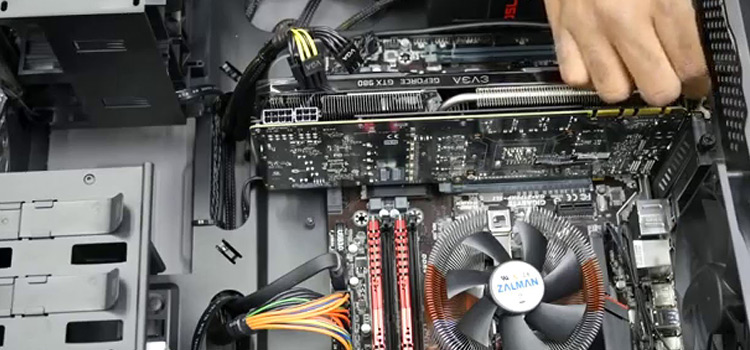Can I Run My Own Coax Cable to My House? What to Know
YES! Running your own coaxial cable to your house can be a rewarding DIY project, whether you’re looking to install cable television, satellite TV, or internet service. It can save you money and provide you with the satisfaction of a job well done.
However, it’s essential to be well-informed and take precautions to ensure a successful installation. In this guide, I will explore what you need to know, the potential downsides, important precautions, technical difficulties, effective methods, and provide answers to frequently asked questions.

Before Using the Own Coax Cable What You Should Know
Before you start, here’s what you should know:
a. Plan Your Route
First of all, carefully plan the route your coaxial cable will take from the source to your house. Consider the distance, number of walls or barriers, and the path of least resistance. This will help you estimate the length of cable you’ll need and identify potential obstacles.
b. Cable Types and Connectors
Coaxial cables come in various types, such as RG-6 and RG-59, each with different characteristics. Choose the appropriate cable for your intended use and ensure you have the correct connectors for your cable and equipment.
c. Safety Precautions
Prioritize safety. Be aware of potential electrical hazards, especially if you need to run the cable near electrical wires or outlets. Turn off the power supply to any electrical circuits you’ll be working near.
d. Local Regulations and Codes
Check with your local authorities and building codes to ensure you comply with any regulations related to running cables, drilling holes, or grounding requirements. Failure to comply can result in safety hazards and legal issues.
What are the Potential Downsides to Use Own Coax Cable
Here’s what you should be aware about running your own coax cable:
1. Technical Knowledge
Running a coaxial cable can be relatively straightforward, but it requires some technical knowledge. Understanding cable types, connectors, and signal loss can be essential for a successful installation.
2. Physical Labor
This is a hands-on project that may involve crawling in attics, drilling holes, and securing the cable outdoors. Ensure you are physically capable of handling the labor involved.
3. Signal Loss
Coaxial cables can suffer signal loss over long distances. The longer the cable, the greater the potential for signal degradation. Use high-quality cables and consider signal boosters for long runs.
How to Run Coax Cable to the House
Here are the basic steps involved in running your own coax cable to your house:
- Choose the right cable: There are different types of coax cable available, so it is important to choose the right one for your needs. RG6 is a good all-purpose cable that can be used for both cable TV and the internet.
- Plan your route: Decide where you want the cable to enter your house and where you want to terminate it. If you are running the cable through the attic or basement, this will be easy. If you need to run it through the walls, you will need to use fish tape to pull the cable through.
- Drill holes: Drill holes for the cable to enter and exit your house. Be sure to use a feed-through bushing to protect the cable from sharp edges.
- Run the cable: Use a fish tape to pull the cable through the holes you drilled. Be sure to leave a service loop at each end of the cable. This will give you extra cable to work with in case you need to make any repairs in the future.
- Terminate the cable: Use compression connectors to terminate the ends of the cable. Be sure to follow the manufacturer’s instructions carefully.
- Connect the cable: Connect the cable to your cable TV or internet modem.
Pro Tips
- Don’t pull the cables too hard, if it’s stuck, or something’s wrong, look at it, rather than pulling it harder.
- To avoid signal interference, don’t pull the coax too close to other electricals and wirings.
- Use cable outlets instead of standard electrical boxes.
- Finally, don’t cheap out on the splitter, otherwise, you risk losing bandwidth.
People Also Ask
- Do I need any special tools for running a coaxial cable to my house?
Yes, you’ll need a cable stripper, a crimping tool for connectors, and cable staples or clips to secure the cable.
- Is there a limit to how long a coaxial cable can be?
Yes, the longer the cable, the greater the potential for signal loss. For longer runs, consider using high-quality cable and signal boosters if necessary.
- How do I know if I need to ground the coaxial cable?
Check local regulations and guidelines. In some cases, satellite dish installations, for example, may require grounding.
- What should I do if I encounter signal interference on my coaxial cable?
Ensure you’re not running the cable near sources of interference, use a shielded cable, and check connectors for proper installation. Grounding can also help reduce interference.
Sum Up
Running your own coaxial cable to your house is a feasible DIY project with the potential to save you money and provide a reliable connection for cable TV or internet services. However, it’s essential to be well-informed, take safety precautions, and carefully plan your installation to avoid common pitfalls and challenges. With the right materials, tools, and knowledge, you can successfully complete this project and enjoy a strong and clear signal for your home entertainment needs.
Subscribe to our newsletter
& plug into
the world of technology





